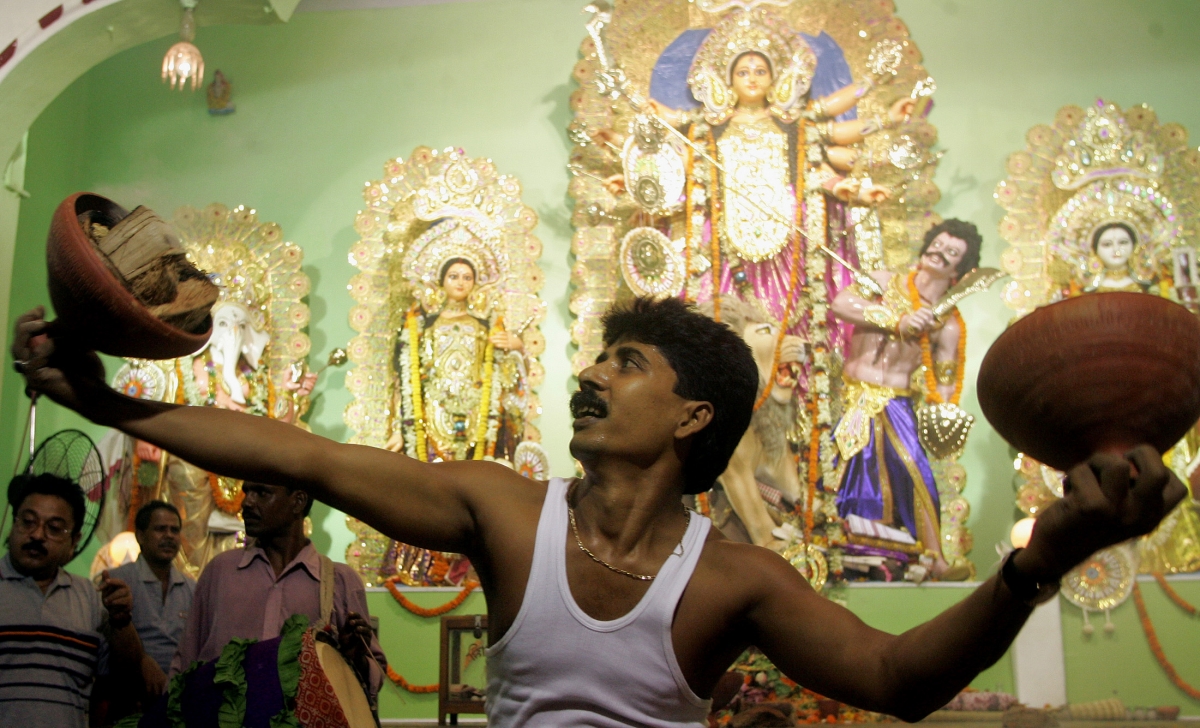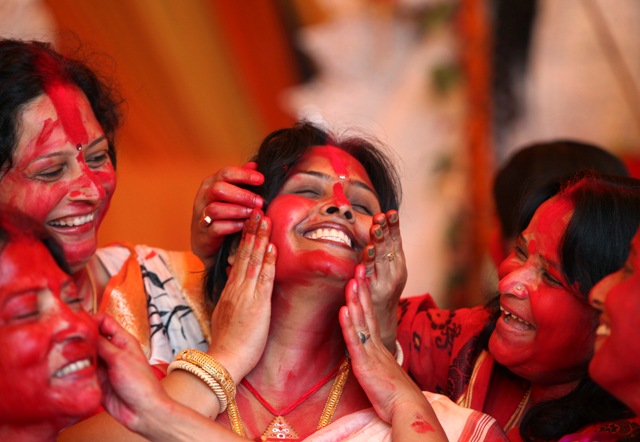It is that time of the year when the sound of 'dhak' (drums), chants and devotional songs fill the air as Goddess Durga gets ready to visit her devotees.
Commencing on 18 October (Shashti), Durga Puja is the Bengali festival that depicts the victory of good over evil.
Goddess Durga had killed the demon king Mahisasur and thus the heaven and earth rejoice in the victory.
It is believed that mother Durga is invited to visit her maternal home and the invocation given to her is on 'Mahalaya'. 'Mahalaya' comes seven days before Durga Puja (this year it falls on 12 October), which marks the invitation to the Goddess to come on the earth.
On this day, Bengalis switch on their radio or television early in the morning to hear or watch the program called Mahisasura Mardini (the annihilation of the demon).
It consists of chanting mantras and singing devotional song – "Jago Tumi Jago" – to invoke Maa Durga. The story of killing Mahisasura, the demon king, by Goddess Durga is shown on the day of Mahalaya. The program ends with her victory and the chanting of mantra – "Ya devi sarbabhuteshshu, sakti rupena sanksthita Namasteshwai Namasteshwai Namasteshwai namo namaha."
Goddess Durga then visits home for five days and Bengalis celebrate, worship, and enjoy the five days of Durga Puja – Shashti, Maha Saptami, Maha Ashtami, Maha Navami and Vijayadashami.
The highlight of the festival is the Durga Puja Bhog, which mainly consists of Khichdi (made of pulses and rice), payesh (rice and milk), red chutney, labra (mixed vegetable) and five different types of vegetable fries.
On the eighth day (Maha Ashtami) of Durga Puja, 'Kumari pujan' takes place and also, on this day the bhog, which is offered to the Goddess, does not contain any rice product.
The evening of Maha Ashtami is the main 'sandhya puja' in which 108 earthen lamps (diyas) are lighted. It is the day when Maa Durga killed the demon king Mahisasura.
A traditional dance ritual – 'Dhunuchi nritya' – is performed in front of the idol of Durga. Drummers stand along with their traditional Indian drums called "Dhak". Dhunuchi nritya is basically done to the beats of these drums during the festival.
Along with worshiping Goddess Durga, Bengalis also have many cultural programs. It has traditional Bengali dance forms and songs. The dancers beautifully portray 'Mahisasur Mardini' through their dance.
On the 10th day (Vijaydashami), devotees (especially ladies) bid farewell to the Goddess Durga by putting sindoor (vermillion powder), as part of a ritual called as "Sindoor Khela".
The Puja ends by immersing Maa Durga's idol in water by chanting 'asche bochor abar hobe' (It will happen again next year) and then everybody wish each other saying "Shubho Bijoya".











